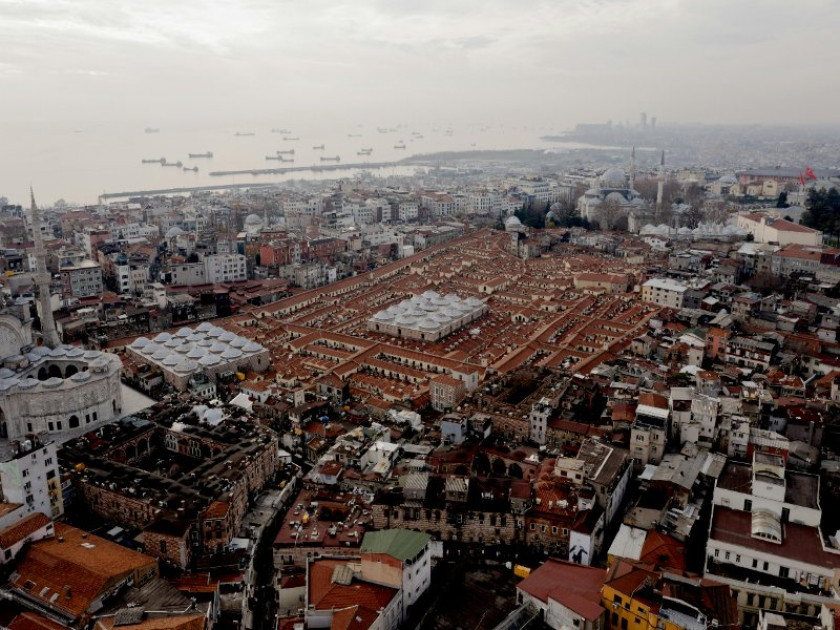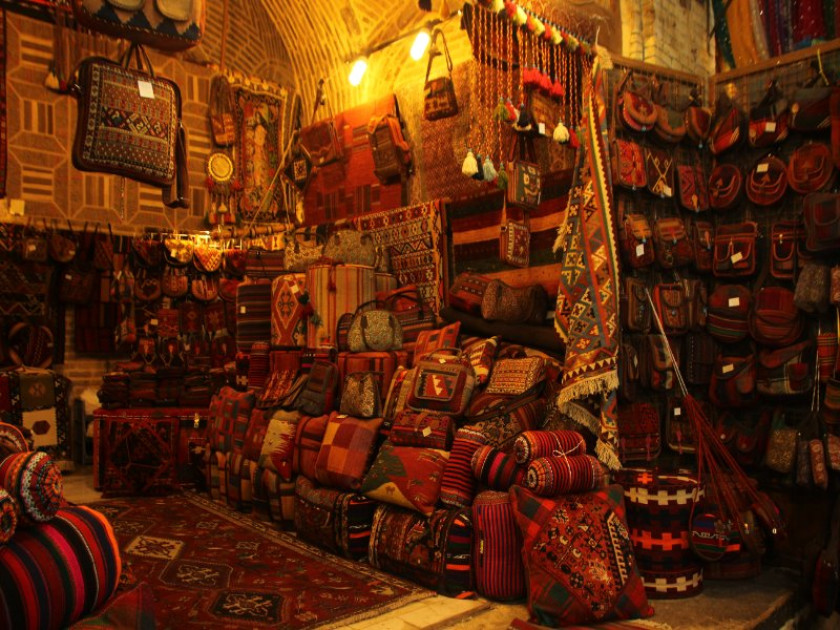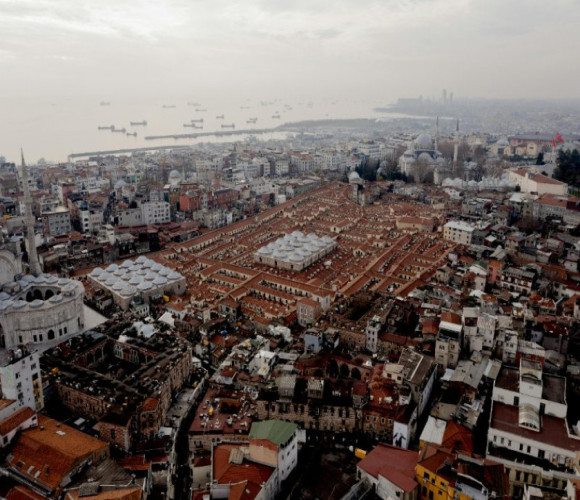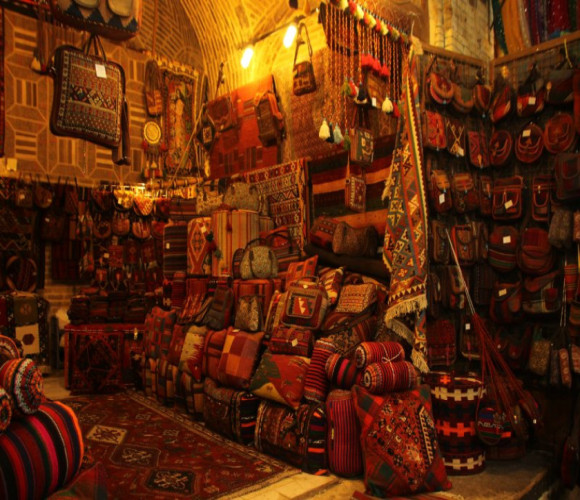- Binbirdirek Mah. Klod Farer Cad. Güven Apartmanı No:2/302 Fatih/İstanbul, Turkey
- Open 08:00-22:00: Monday - Sunday
- drop us an email info@istanbulguideservices.com
- 24/7 service +90 555 6022454
tags:




A Labyrinth of Commerce and Culture
At the heart of Istanbul's historic peninsula lies the legendary Kapalı Çarşı—the Grand Bazaar—a sprawling mercantile empire that has pulsed with commerce for over five centuries. More than just a shopping destination, this intricate maze of 4,000 shops represents one of the world's oldest and largest covered markets, a living museum where Turkey's trading traditions remain vibrantly alive.
The Grand Bazaar transcends the conventional concept of a market. Behind its ornate gates lies a self-contained universe complete with mosques, banks, police stations, restaurants, and workshops spanning kilometers of interconnected streets. This labyrinthine complex evolved organically since its establishment in 1461 under Sultan Mehmet II, growing from a humble warehouse into a commercial epicenter that helped fuel the Ottoman Empire's prosperity.
While the main arteries of the bazaar cater to camera-wielding visitors with persistent vendors hawking Turkish delight and evil eye charms, the real magic unfolds in the quieter alcoves. Here, in the back streets and historical hans (caravanserais), time seems suspended as local artisans continue crafts passed down through generations—jewelry makers melting gold in ancient workshops, leather workers stitching by hand, and coppersmiths hammering out intricate patterns.
At the market's core stands the Cevahir Bedesteni (Jewellery Warehouse), the original 15th-century structure from which the entire bazaar grew. This fortified building once housed the empire's most valuable treasures and still contains the bazaar's most prestigious shops. Inside, glass cases glitter with Ottoman-era coins, antique silver, and heirloom jewelry that whispers tales of imperial splendor.
Flanking the Grand Bazaar's eastern entrance stands the magnificent Nuruosmaniye Mosque (Light of Osman Mosque), a masterpiece of Ottoman Baroque architecture built between 1748 and 1755 during the reigns of Sultans Mahmut I and Osman III. Its imposing dome and distinctive curved courtyard represent the empire's architectural evolution and growing European influences. Despite its innovative design, the mosque bears unmistakable echoes of Hagia Sophia's grandeur. Visitors passing through its courtyard find themselves directly at the Çarşıkapı (Bazaar Gate), where the mosque's spiritual tranquility gives way to the bazaar's commercial energy—a perfect embodiment of Istanbul's dual nature.
Adjacent to the Grand Bazaar lies the historic Sahaflar Çarşısı (Old Book Bazaar), a cherished sanctuary for book lovers. Dating back to Byzantine times, this atmospheric marketplace once housed Byzantine manuscript sellers before evolving into an Ottoman hub for rare books and calligraphy. Today, its quaint shops offer everything from antique literary treasures to second-hand academic texts, making it a vital cultural institution where scholars, collectors, and casual readers alike can discover literary gems. The shaded courtyard, with its statue of Ibrahim Müteferrika (founder of the first Turkish printing press), provides a peaceful haven for browsing away from the bazaar's sensory overload.
Hidden within the bazaar's labyrinthine streets are fabric shops that have long served as secret sources for Turkey's most celebrated fashion designers. These textile emporiums display dazzling arrays of silks, cottons, and wools in every imaginable hue and pattern. Designers regularly make pilgrimages here to discover unique materials for their collections, from traditional Ottoman brocades to contemporary imported fabrics. Shops like Nick, famous for "bringing life to leaves" through intricate textile designs, represent the bazaar's perfect blend of tradition and innovation that continues to inspire Turkey's thriving fashion industry.
The Grand Bazaar remains a living economic ecosystem where Istanbul's residents still shop for life's necessities and luxuries. A bride-to-be might select her wedding jewelry from the atmospheric Zincirli Han, where master craftsmen create custom pieces. A grandmother might haggle over the price of a length of printed fabric for new curtains. A collector might spend hours seeking the perfect antique carpet, examining each knot with practiced eyes.
Beyond its role as a tourist attraction, the Grand Bazaar functions as a vital economic artery for Turkey's financial system. Its numerous gold and currency exchange businesses conduct transactions that significantly impact the nation's daily economic rhythm. The market has historically served as an unofficial financial barometer, with exchange rates and gold prices often reacting to economic developments before official markets. This traditional trading hub continues to play a crucial role in Turkey's contemporary economic landscape, blending centuries-old trading practices with modern financial realities.
Among the bazaar's culinary offerings, Nusret Steak Restaurant stands out as a contemporary landmark. Founded by the internationally renowned chef Nusret Gökçe (famously known as "Salt Bae"), this premium steakhouse offers respite from the market's hustle with its theatrical presentation of expertly prepared meats. Located near the bazaar's Nuruosmaniye entrance, the restaurant has become a destination in its own right, where traditional Turkish hospitality meets modern gastronomy. Diners can watch as chefs skillfully butcher, season, and flame-grill premium cuts of beef, providing a sensory experience that complements the visual feast of the bazaar itself.
The Grand Bazaar catapulted to global cinematic fame when it served as a dramatic backdrop in the 2012 James Bond film "Skyfall." The market's ancient terracotta-tiled rooftops became the setting for an exhilarating motorcycle chase scene featuring Daniel Craig's Bond in pursuit of an assassin. Following the film's worldwide success, the previously inaccessible rooftop was opened to visitors, offering a unique perspective of both the bazaar's massive scale and the surrounding Istanbul skyline. Today, guided tours of the roof are available for a fee, allowing film enthusiasts and architecture buffs alike to stand where 007 once raced, with panoramic views of minarets and domes punctuating the horizon.
The Grand Bazaar anchors a vast commercial district that cascades downhill toward the Golden Horn. Follow Uzunçarşı Caddesi (Longmarket Street) through Tahtakale, where everything from handcrafted wooden spoons to contemporary electronics changes hands. The journey ends at the jewel-like Rüstem Paşa Mosque, whose interior walls showcase some of the finest Iznik tiles in existence—a fitting artistic finale to this mercantile pilgrimage.
The Grand Bazaar demands exploration on its own terms. Open daily except Sundays (8:30 am to 6:30 pm), it rewards visitors who arrive with patience and curiosity rather than rigid itineraries. While remaining vigilant against opportunistic pickpockets, wander until lost, accept offers of tea from shopkeepers, and witness the centuries-old dance of commerce that continues to define this remarkable institution.
Like countless tourists before you, getting lost in the Grand Bazaar isn't just a possibility—it's practically a requirement. The maze-like structure, with its countless offshoots and hidden corners, invites deliberate disorientation as the best way to discover its treasures. As the Turkish saying goes, sometimes you must lose yourself to find what you're truly seeking.
In a city straddling continents and epochs, the Grand Bazaar stands as Istanbul's commercial soul—a place where the past isn't preserved behind glass but lives on in every transaction, every cup of tea, every handcrafted treasure passing from artisan to owner, continuing an unbroken tradition of trade that has defined this crossroads of civilization for half a millennium.
Sun, Mar 16, 2025 6:28 PM
Comments (Total 0)